Intel unwraps Lunar Lake architecture: Up to 68% IPC gain for E-cores, 14% IPC gain for P-Cores
Rearchitecting for power and performance.







The new Xe2 iGPU delivers up to 1.5X more graphics performance than Meteor Lake's Arc Graphics, with up to 67 TOPS of AI performance. Intel has also simplified the naming of its GPU architecture and will simply refer to it as Xe2 in all configurations, as opposed to the Xe-LP, Xe-HP, and Xe-HPG suffixes used with the prior-gen Xe architecture.
Intel’s Xe2 architecture will not only come in the Lunar Lake processors, but it will also be used in the upcoming Battlemage discreet gaming GPUs. However, while the architecture may be the same, Lunar Lake uses lower-power transistors while Battlemage will employ faster transistors to maximize performance. That means the Lunar Lake performance projections can’t be directly extrapolated to predict the performance of Battlemage GPUs — not to mention dedicated GPUs will have dedicated VRAM as well.



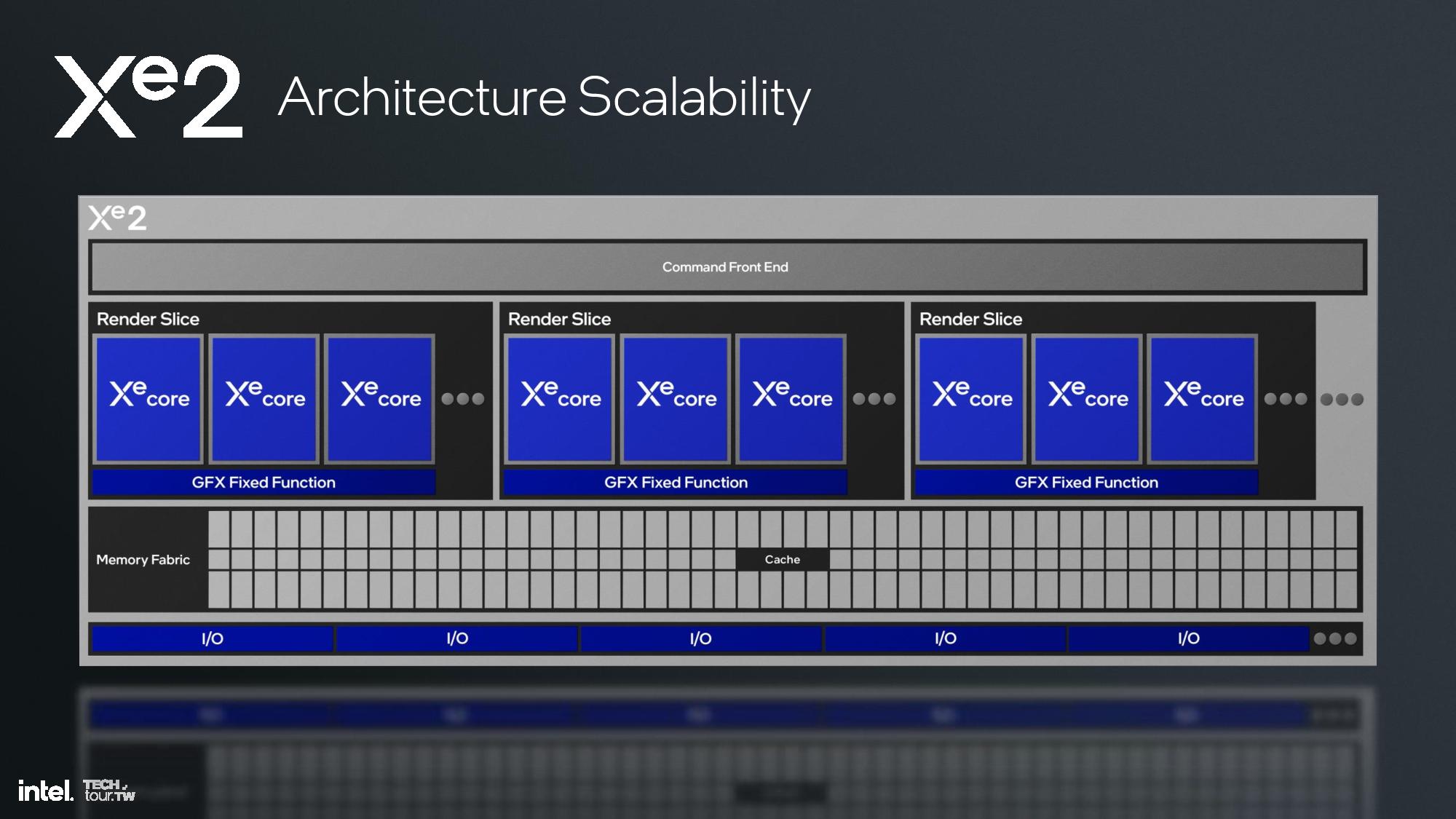



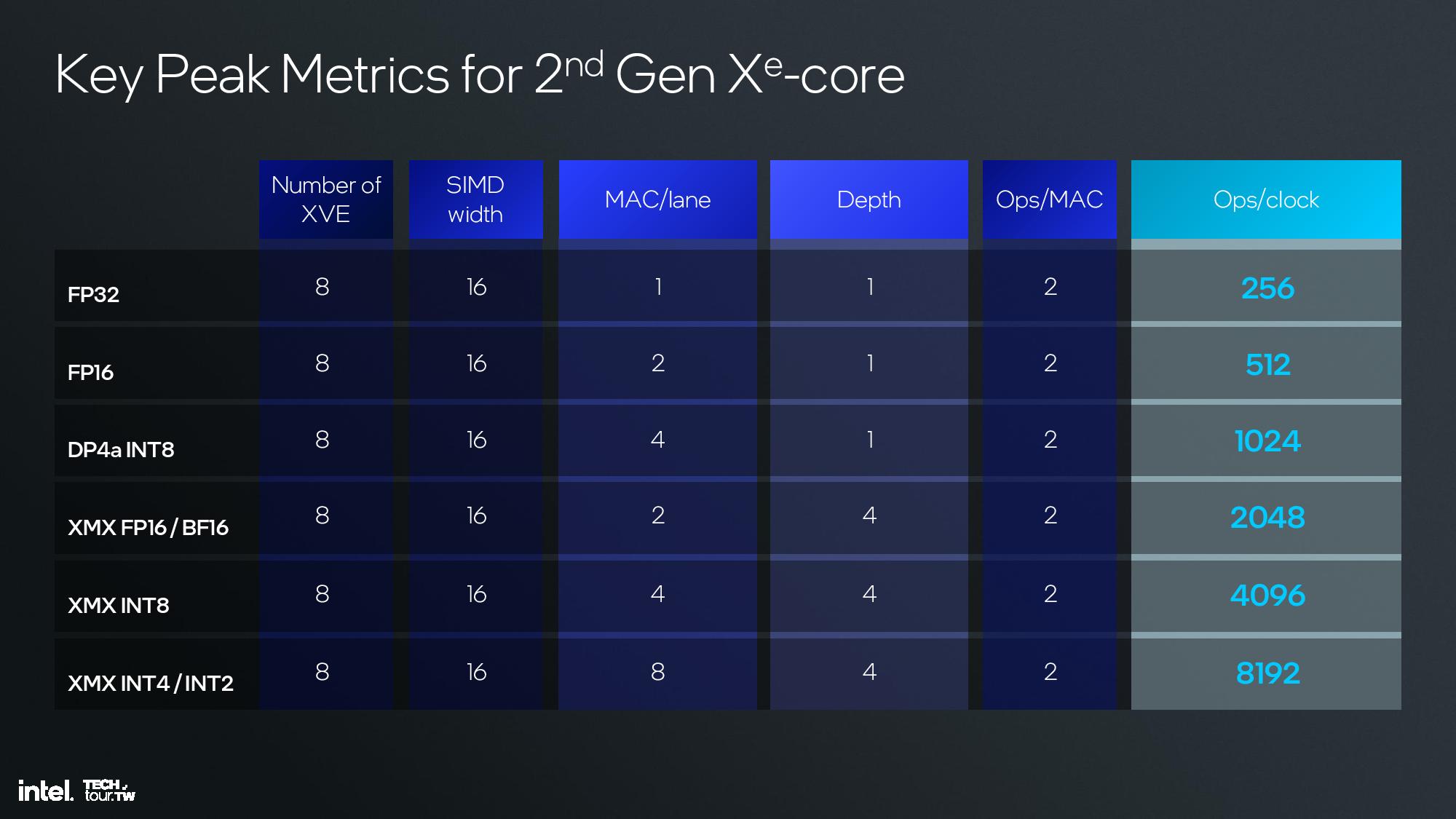

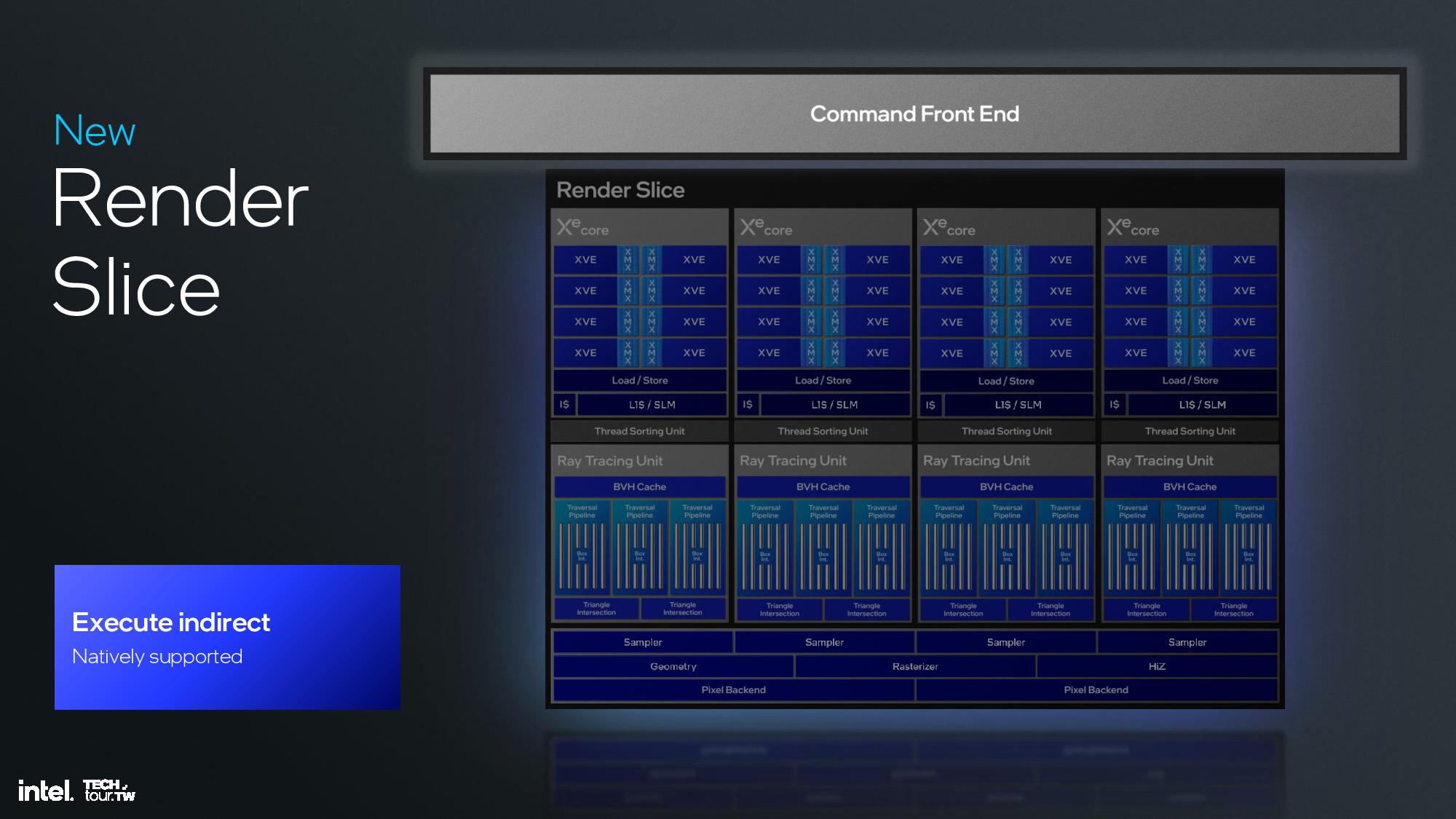









The Xe2 GPU architecture features Intel's second-gen Xe core, larger XMX engines that support more data types, enhanced vector engines, larger ray tracing units, and deeper caches. The GPU is broken down into second-generation Xe cores and render slices, along with fixed functions graphics hardware for tasks like geometry processing, texture sampling, and rasterization. These units are connected to a large cache and memory fabric, along with I/O accommodations that vary based upon the implementation. The design is inherently modular, so it can be easily scaled to either more or fewer units.
The second-gen Xe core can do eight 512-bit multiplies per clock in the XVE vector engines and eight 2048-bit vectors per clock in the XMX engines. Intel also increased the SIMD engine from 8 lanes wide to 16 lanes wide, which is a more common arrangement that will enhance compatibility. The core also has a 192KB shared L1.
The second-generation vector engine supports INT2, INT4, INT8, FP16 and BF16 for AI operations. You can also see a table that has the calculations for peak TOPS (Ops/clock) in the album above. Note that the previous Meteor Lake iGPU cut the XMX Engine from the design in order to reduce die area and power requirements, so laptops with Xe2 will see significant improvements in AI workloads included XeSS.
The render slice has also seen plenty of improvements, including a 3X vertex fetch throughput improvement by changing the vertices distribution across the pipeline, a tripling of mesh shading performance via vertex re-use, new support for out of order sampling, and twice the throughput for sampling without filtering, among other improvements. Intel also cites increased ray tracing performance due a reorganized pipeline in the new Xe Ray Tracing Unit (RTU).








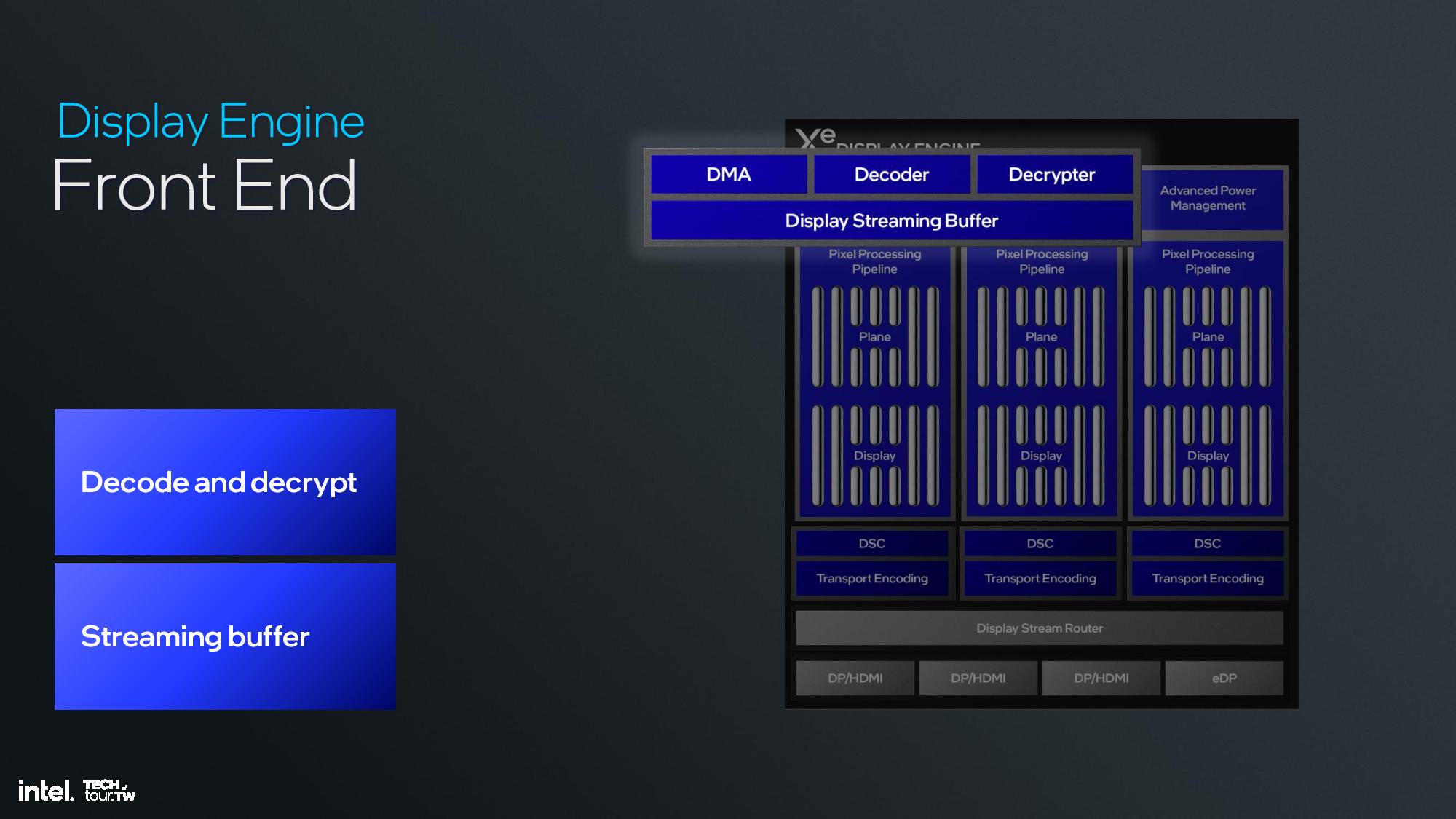









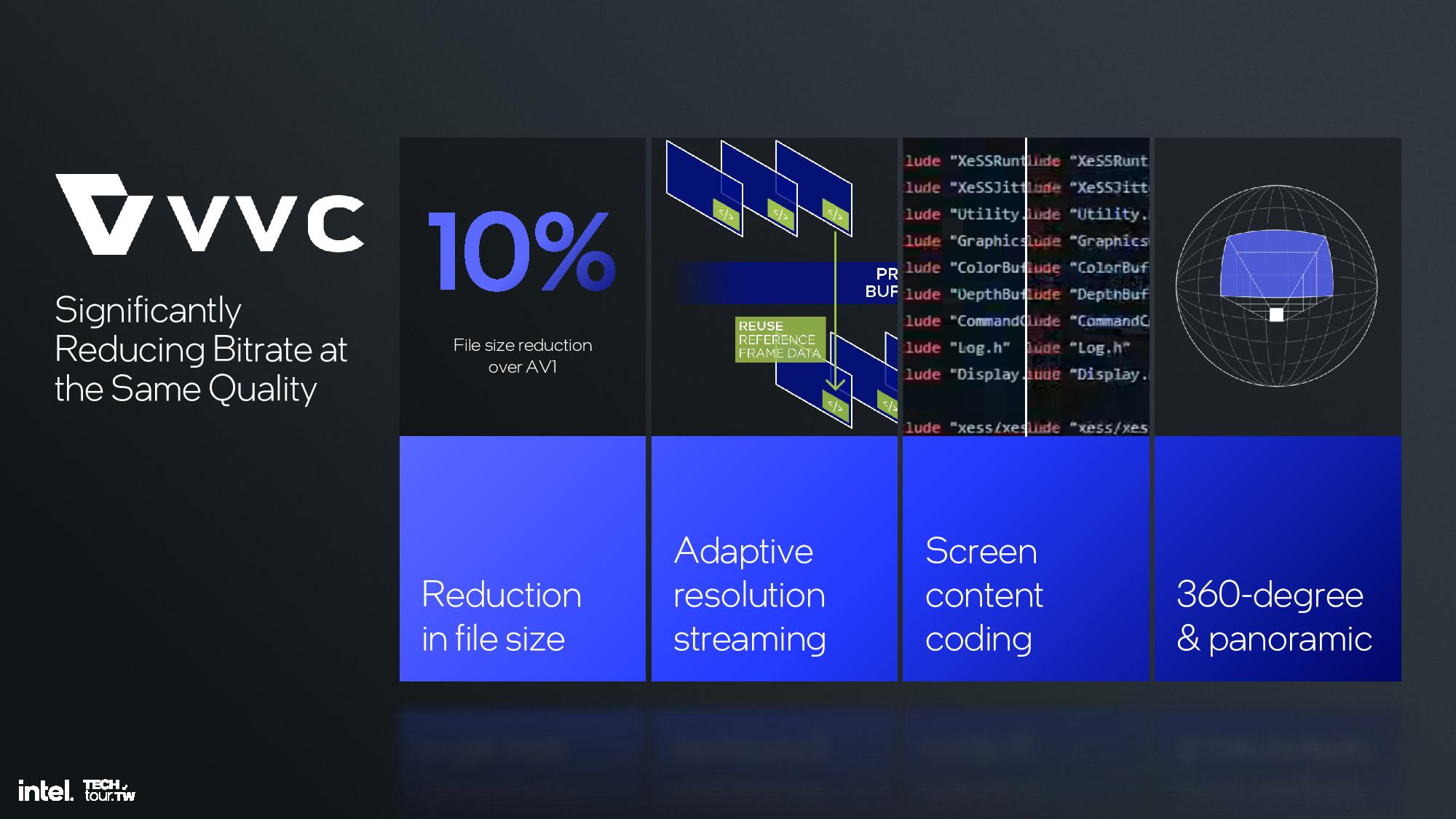

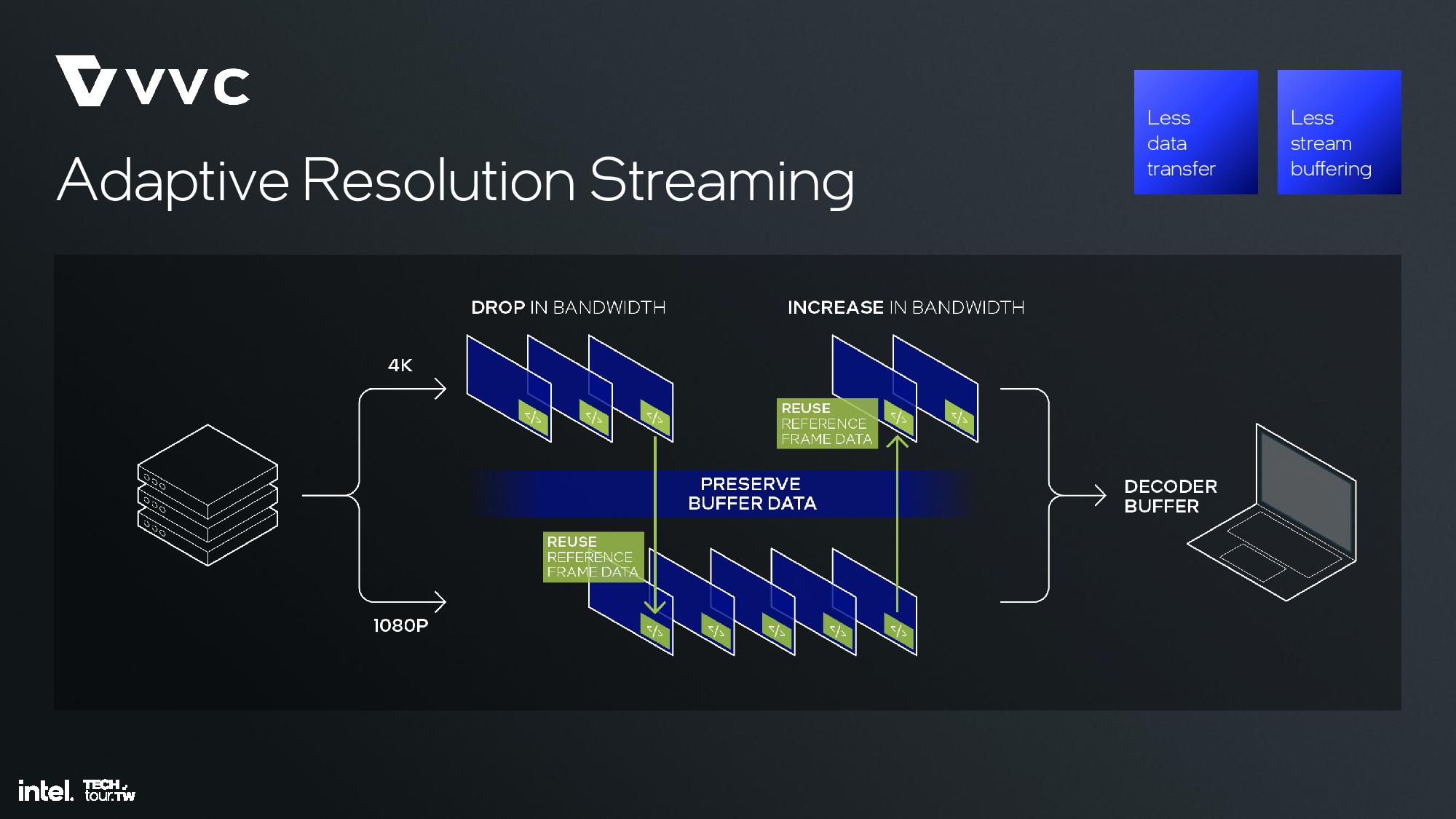









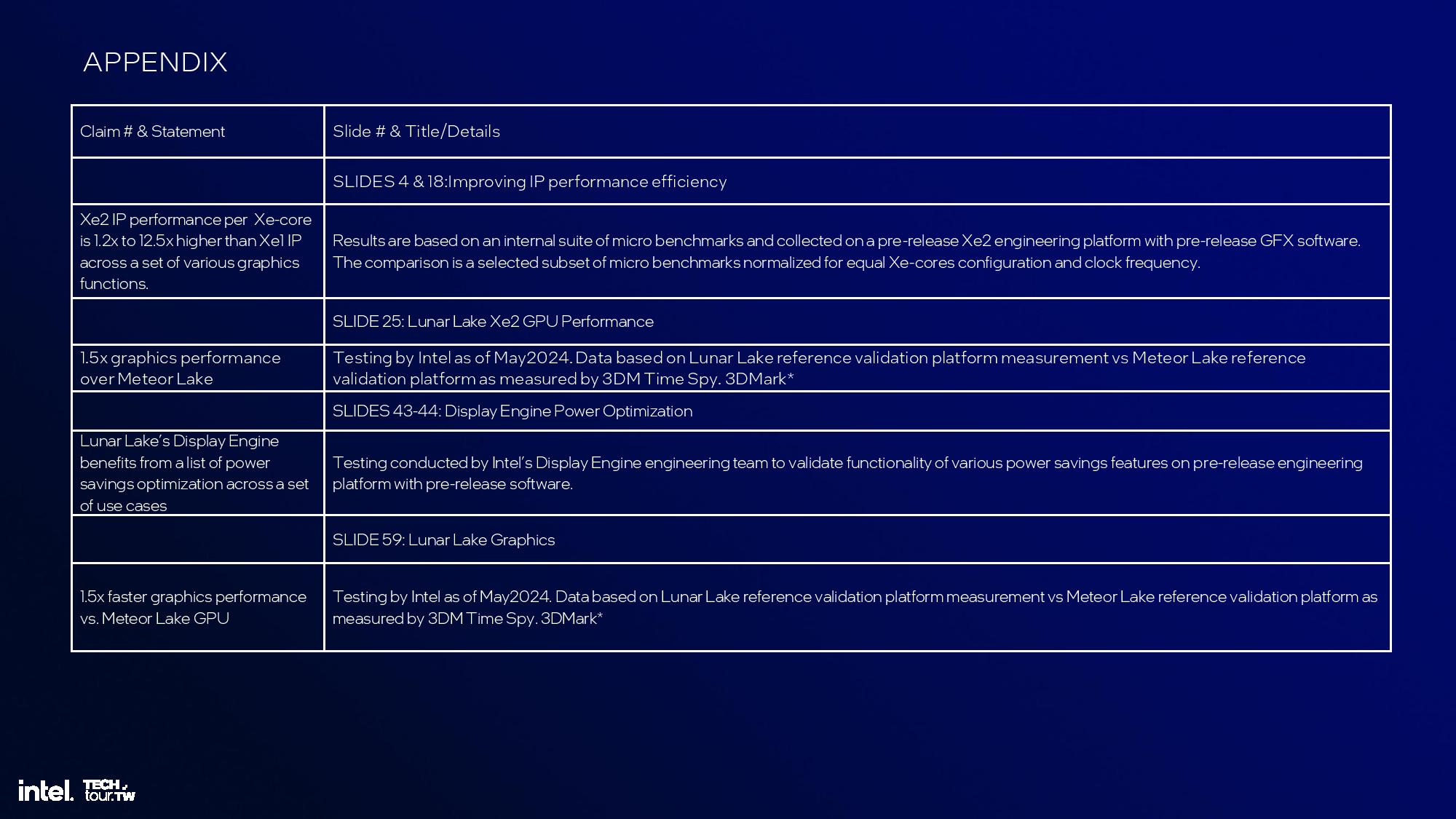
These ingredients are used to create Lunar Lake’s specific iGPU hardware configuration. Lunar Lake comes armed with eight second-gen Xe cores, 64 vector engines, two geometry pipelines, eight ray-tracing units, and 8MB of L2 cache, among other ingredients.
Intel says the Lunar Lake iGPU delivers 1.5X more performance than Meteor Lake-U at the same power threshold. Moving to Meteor Lake-H, Lunar delivers “similarly higher” performance at the upper end of the power range. However, the Lunar Lake GPU is designed for performance-per-watt with lower power transistors.
The display engine has three display pipes, up to 8K60 HDR, three 4K60 HDR displays, and up to 1080p360 and 1440p360. Outputs include HDMI 2.1, DisplayPort 2.1, and eDP 1.5. You can see the details of the graphics engine pipeline in the slides above.
The memory side cache provides 8MB to store some of the media information to increase bandwidth and save power. The media engine supports up to 8K60 10-bit HDR decode and encode, along with support for all of the media standards, along with the new H.266/VVC codec — but only for decode.
And of course, all of the new graphics features are backed by the past couple of years of effort by Intel's GPU drivers team. Arc GPUs first arrived in 2022 and had plenty of early growing pains. The latest drivers have come a long way, and Xe2 should benefit from everything that came before, with some improvements in the core architecture to remove bottleneck and limitations present in the first generation of Xe Graphics.
Get Tom's Hardware's best news and in-depth reviews, straight to your inbox.
Current page: Lunar Lake Xe2 GPU
Prev Page Intel Lunar Lake ‘Skymont’ E-core Microarchitecture Next Page Lunar Lake NPU, Platform Controller Tile, and Thoughts
Paul Alcorn is the Editor-in-Chief for Tom's Hardware US. He also writes news and reviews on CPUs, storage, and enterprise hardware.
-
dimar I'd like to see extensive power consumption/performance benchmarks for the next gen. Intel, AMD, ARM CPUs and how slower and faster SSDs affect the battery life.Reply -
cyrusfox Fascinating the disparity in improvement between Floating point vs integer single thread uplift. Huge FP uplift! Eye popping improvements!!! That is lame though, comparing to the gimped e-cores...Reply
but the comparisons are once again being made to the low-power Meteor Lake E-core instead of the full E-core
iGPU uplift is looking really solid, this seems to check all the boxes of what I need in a device. For toting around I really don't need 24+ cores, 8 is plenty and with this much GPU as well as hopefully maturing platform. Excited to see the products and where the pricing lands. Hope Framework gets a flavor of this. -
jenci8888 68% ipc gain e-core? That doesn't seem right... I think they meant 68% gain e-core on specfp. It should be 30% ipc around.Reply -
usertests Reply
They also compare it to Raptor Cove, and if I'm reading it right, claim +2% IPC over that. With the caveat repeatedly mentioned in the article that Intel is giving itself a 10% margin of error.cyrusfox said:That is lame though, comparing to the gimped e-cores... -
thestryker Well it seems we have an answer regarding HT and that is it depends. It'll be interesting to see which version of the Lion Cove desktop ARL uses. I wouldn't be surprised if mobile ARL went without HT, but it seems like desktop could probably keep it even though they emphasize hybrid when referring to dropping it.Reply
Will be looking forward to seeing real world performance on LNL and ARL.
Just a guess based upon the testing Chips and Cheese did on the MTL LP E-cores removal from the ring bus and thus the L3 cache can have an outsized impact on performance. This would in theory be the closest comparison to an existing product.cyrusfox said:That is lame though, comparing to the gimped e-cores... -
Giroro I think cheap Mini PCS using Intel's N100 all E-core processor are a perfectly usable office machine for many people, and I would love to see those upgraded with the new E cores.Reply
That said, I would never buy one, because they would definitely spec those machines with a worthless amount of non-upgradeable memory.
One of the major features adding value of the N100 machines, is that you can usually upgrade the RAM.
Now for the high end Lunar Lake products... There is no high end. If Intel doesn't convince manufacturers to keep ultrabooks with the highest available configuration under $1200, then they're going to have a problem -
Evildead_666 Can people please stop using the word Architect as a verb please ?Reply
"Redesigned" would have been perfect for this article.
Architected or Rearchitected do not exist.
Cheers. -
Dragos Manea Reply
That would to similar with the article from which they copied and pasted, they had to change some words even if it is with words that does not exist.Evildead_666 said:Can people please stop using the word Architect as a verb please ?
"Redesigned" would have been perfect for this article.
Architected or Rearchitected do not exist.
Cheers. -
bit_user Reply
This is based on a somewhat biased performance comparison (see below).The article said:38% and 68% IPC gains in the new Skymont architecture.
Initially, I missed what you probably meant by "gimped". As I see @thestryker has pointed out, comparing to the LP E-cores is indeed quite lame of them, since its lack of L3 cache has been shown to disadvantage it relative to the Crestmont cores on Meteor Lake's CPU tile.cyrusfox said:Fascinating the disparity in improvement between Floating point vs integer single thread uplift. Huge FP uplift! Eye popping improvements!!! That is lame though, comparing to the gimped e-cores...
Dang. I was really excited for a minute, there.
: ( -
bit_user Reply
Yeah, they seem to be somewhere around the performance of a Sandybridge or Haswell i5, which is still pretty usable. Of course, their iGPU is much better than those CPUs'.Giroro said:I think cheap Mini PCS using Intel's N100 all E-core processor are a perfectly usable office machine for many people, and I would love to see those upgraded with the new E cores.
You can find some that take a DDR5 SO-DIMM. I have 32 GB in my N97 machine. It doesn't need that much, but I did it just to get dual-rank, for the small performance boost it provides.Giroro said:That said, I would never buy one, because they would definitely spec those machines with a worthless amount of non-upgradeable memory.
One of the major features adding value of the N100 machines, is that you can usually upgrade the RAM.